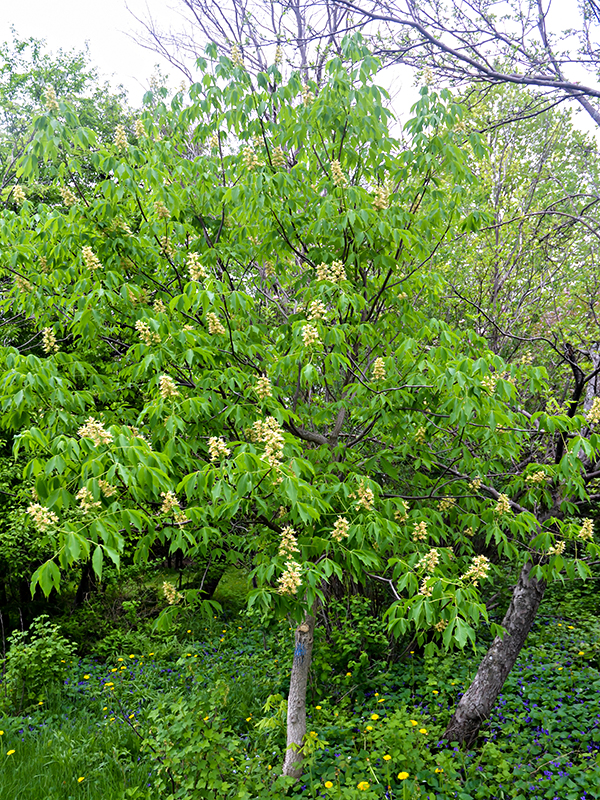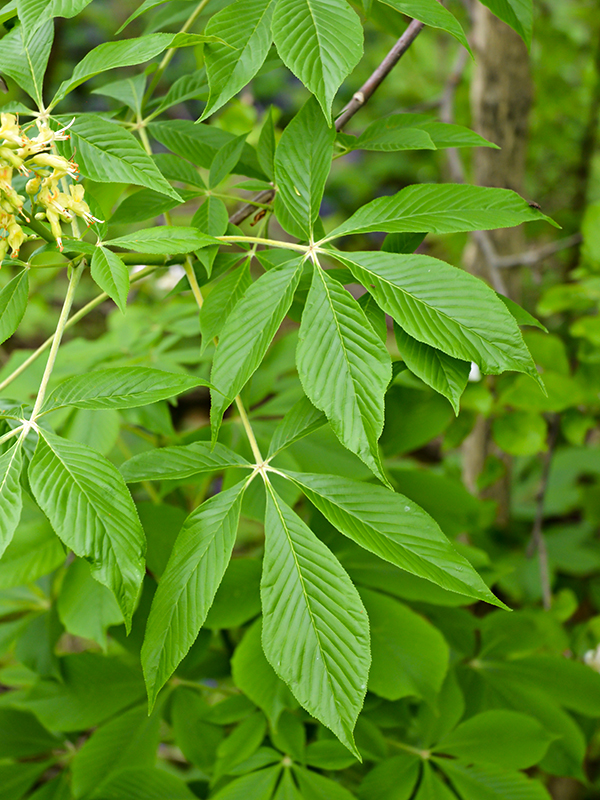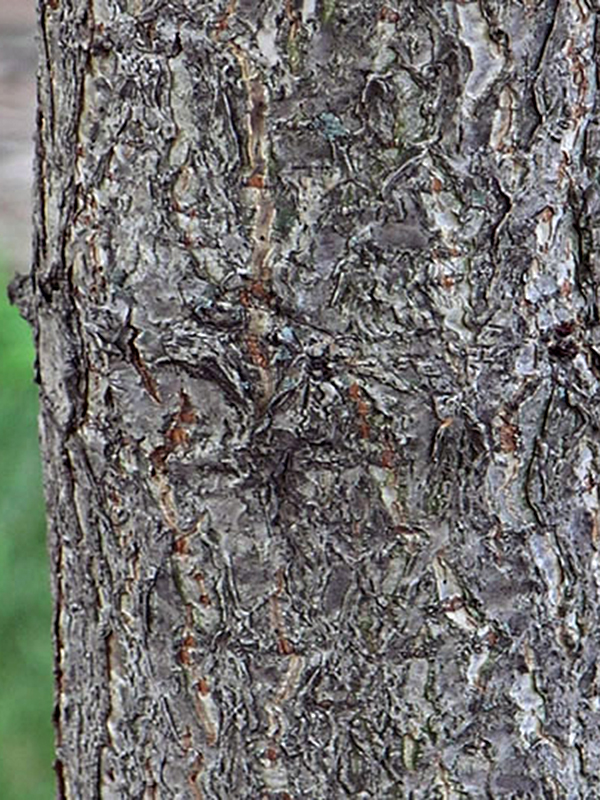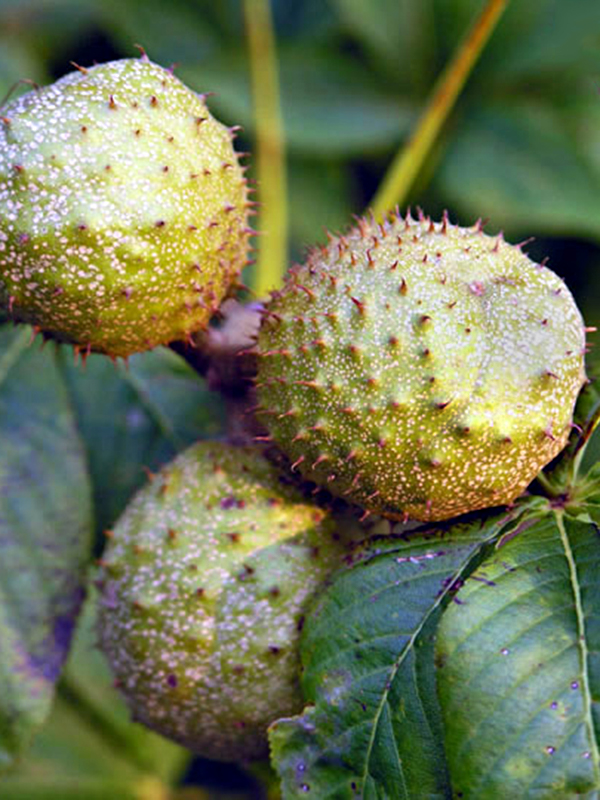
Woody > Aesculus > Aesculus glabra > Aesculus glabra
Aesculus glabra
Ohio Buckeye
Origin: North American native, Pennsylvania to Nebraska, Alabama to Kansas. First cultivated in 1809.
Mike's
Opinion


"
The glabra species is the only Aesculus grown for its autumn colour. Although it has a superior autumn colour, it also has the most undesirable and insignificant flowers of all Aesculus species. For a large estate, glabra would make an excellent addition for its autumn foliage, however the short period during which it is attractive makes glabra a poor choice for a small garden with few specimen choices.
Michael Pascoe, NDP., ODH., CLT., MSc. (Plant Conservation)
"
| Family |
| Sapindaceae (Hippocastanaceae) |
| Genus |
| Aesculus |
| Species |
| glabra |
| Category |
| Woody |
| Type |
| Tree (deciduous) |
| Pronunciation |
| USDA Hardiness Zone |
| 4 - 7 |
| Canadian Hardiness Zone |
| 3 |
| RHS Hardiness Zone |
| H7 |
| Temperature (°C) |
| -35 |
| Temperature (°F) |
| -30 |
| Height |
| 15-20 m |
| Spread |
| 10-15 m |
Photographs
Description and Growing Information
Flowering Period
| General Description |
| Very rounded, broad form with low growing branches. Very dense light-dark green foliage, medium-coarse in leaf, with orange autumn colour. Small green-yellow flowers are borne in panicles. Bark is grey and fissured. The fruit is light brown, prickly, and dehiscent. |
| Landscape |
| A tree better left in it’s natural environment, Aesculus glabra is a good tree for parks, potentially golf courses and other large areas, but not a great street tree and would not be suited for a small residential landscape. |
| Cultivation |
| Aesculus glabra is an easily grown tree given well drained, loamy type soils. |
| Shape |
| Rounded, broad, sometimes conical, and very dense. Pyramidal-rounded to oval-rounded in youth. |
| Growth |
| Medium |
| ID Characteristic |
| Disinctive shiny green palmate leaves turn vibrant orange in autumn. Aesculus glabra is the only American Buckeye with prickly fruit. |
| Pests |
| Antracnose is the most serious disease afflicting the glabra species. Powdery mildew, leaf spot, wood rot, canker, leaf blotch, Comstock mealy bug, Japanese beetle, bagworm, walnut scale and flat-headed borer issues have been reported. |
| Bark/Stem Description |
| Ash-grey, deeply fissured, corky-warty, scaly, platy older trunks, newer growth pubescent becoming glabrous ash grey to red-brown, with unappealing odour when bruised. |
| Flower/Leaf Bud Description |
| Brown coloured, ovoid, terminal, sessile, imbricate, approximately 2 cm long, prominently keeled scales, tomentose margins, lateral buds much smaller. |
| Leaf Description |
| Opposite, palmately compound, five leaflets each, rarely seven, elliptic to obovate leaflet shape, 5-8 cm long, 2-4 cm wide, finely serrate, cuneate, pubescent underside when young, becomes glabrous with maturity, medium to dark green colour. |
| Flower Description |
| Perfect, small, greenish-yellow, with protruding stamens, approximately 2 cm long, 4 petalled, borne in conical panicles, flowers early-mid May. |
| Fruit Description |
| Light-brown, broadly obovoid, dehiscent capsule, 2-4 cm long, echinate covering, seeds are poisonous and solitary. |
| Colour Description |
| Medium to dark green leaf colour, turns a vibrant orange in autumn, greenish yellow flowers. |
| Texture Description |
| Medium to coarse when in full foliage, coarse in dormancy. |
| Notable Specimens |
| Hamburger University, DuPage, Illinois, 22 meters tall with a 21 meter spread. |
| Propagation |
| Seed should be stratified in a moist medium for 120 days at 5°C. Aesculus seeds should be collected when seeds show signs of dehiscence. Seeds are best sown in autumn; cover seeds with a depth equal to the seeds size. |



